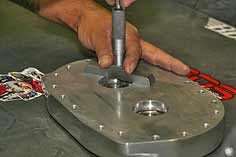
Before pre-assembly end plate bearing depth is checked and measurements recorded in order to calculate clearance machining.
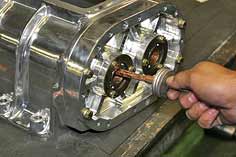
Antisieze goes into the bearings to prevent galling, as the supercharger will need to be assembled and disassembled numerous times before proper clearances are achieved.
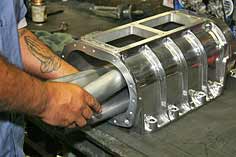
In go the rotors before the other bearing plate is installed.
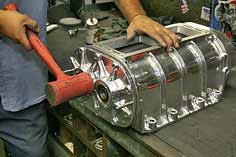
A smaller than final size set of dowel pins are installed and the bearing plate is tapped into place. The smaller dowel pins allow for wiggle room on adjustments.
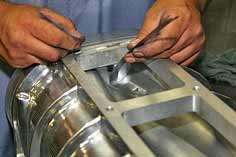
The pre-assembly is measured for clearance. |
This arrangement is ideal for making scads of power almost instantaneously off idle – perfect for something like drag racing. While all this sounds simple, the fact of the matter is the tolerances required to keep the blower from overheating and locking up solid are measured in thousandths of inches. Setting these tolerances gets especially tricky, when one figures in expansion of materials due to heat and thermodynamics.
Set a blower up right, and it will spin along for a long time with no complaints. Set one up wrong, and it will stop spinning in short order. This holds true regardless of whether you're running a relatively loose street blower making a few pounds of boost or a full on stage five race only package huffing twenty plus pounds per square inch. The time it takes to set it up right the first time pays off in the long run and makes the difference between long lasting performance and a short money burning exercise.
The tools and expertise required getting things boosting go beyond that of your average driveway mechanic. Unless you know what you're looking for and what you're doing, building superchargers is a job best left to the professionals. Often that swap meet blower may not be a good as a deal as you thought it was when the you find out how much its going to cost to bring it up to snuff, or huff, as it were.
Drag Racing Online took some time out, courtesy of Blower Drive Service in Whittier, California, to see what goes into setting up a stage 1 street-strip roots type 6:71 supercharger the right way, and what goes into keeping a roots blower making reliable boost when the loud pedal is mashed into the floorboard. Although we can't say the same for you, at least you know the blower won't get locked up in the can from your lead-footed ways.
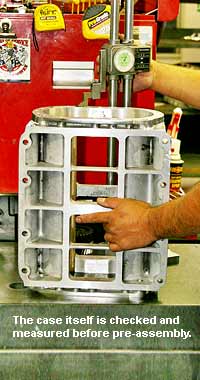
|
